2 Million Mentions Analyzed: How We Created the Top 100 Influencers Report
Influence
[mass noun] The capacity to have an effect on the character, development, or behavior of someone or something, or the effect itself.
While the Oxford English Dictionary has it pretty straightforward, the idea of influence in e-commerce, social media and marketing is slightly blurred.
The marketing industry is constantly being presented with all sorts of lists and rankings of the most influential players in the game. Such lists oftentimes spark a debate and raise a number of questions related to the fairness and actual accuracy of these rankings.
Skeptics raise a number of questions. What does influence in marketing mean? How to measure it? Is it even possible to measure it?
These are indeed the problems that the marketing industry is facing. For example, why Gary Vaynerchuk is considered one of the leading industry influencers? Is it the increase in income his followers’ businesses generated thanks to Gary’s mentoring? Or should we measure the number of people who started working more hours per day? Influence can be analyzed on so many levels. That’s why the notion of influence in e-commerce, social media, and digital marketing industries is quite elusive, if not impossible to grasp. At least at the moment.
Having in mind the above, we decided to go for numbers. We created the Top 100 Marketing Influencers report based on solid numbers connected to social media engagement marketers drive.
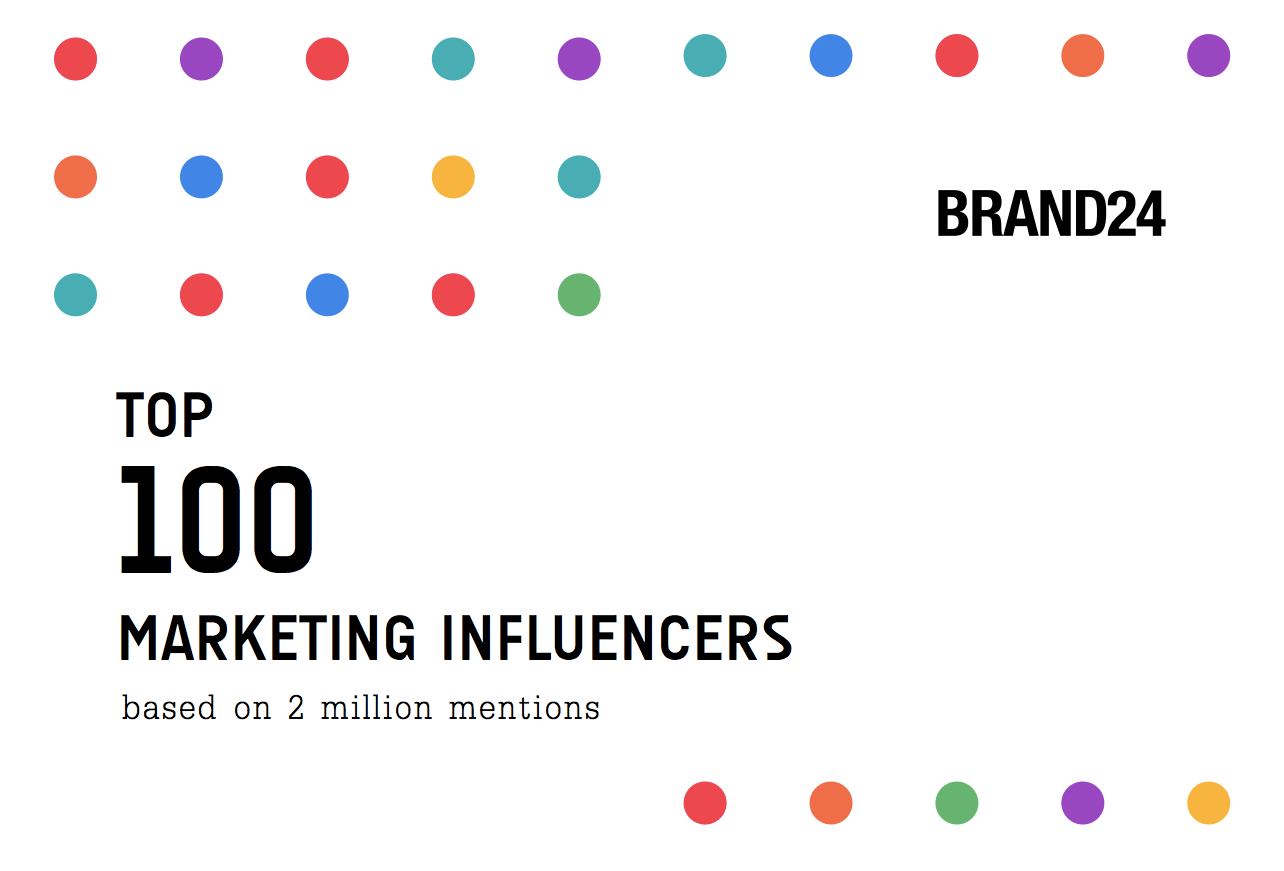
No worries if you skipped the release, you can still get the report.
What’s In This Post For You
Creating this report requires a lot of effort, patience, and humility. On the other hand, it’s a fruitful undertaking in terms of experience, knowledge, results and feedback. In this blog post, I’d like to share a couple of thoughts on:
- The value of the report
- How it’s made
- Approaching the feedback
- Life lessons & major takeaways
Where’s the Value
Here at Brand24, we cherish value. We put it to our work and appreciate the value others show us.
We live now in reality in which people strive for value. Lack of time doesn’t leave a lot of room for browsing through valueless articles. The world seeks solutions. Good solutions. Now.
This report is our attempt to bring value to influencers and people aiming at becoming influencers on a few levels.
Did we succeed? I hope you will be able to answer it once you’ll get your copy.
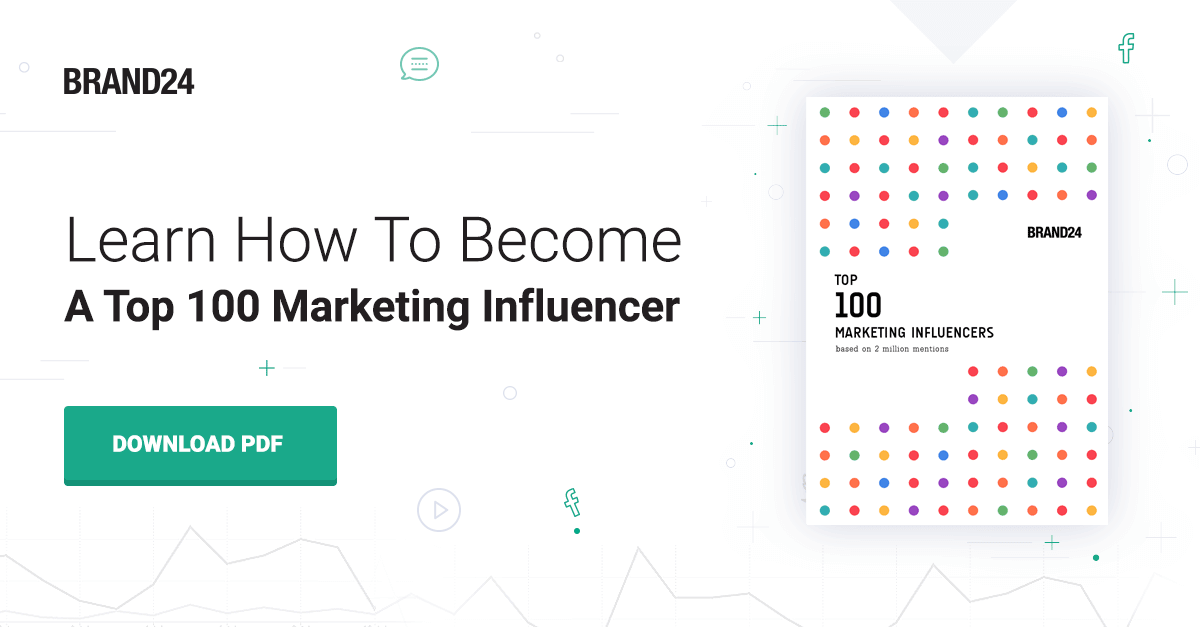
Here are some things that support our efforts to give the world value.
1. Data.
Please, keep in mind that
“Statistics are like bikinis. What they reveal is suggestive, but what they conceal is vital.” – Aaron Levenstein
It was our utmost goal to avoid creating another ranking based on God knows what. Therefore, we used social media monitoring to get the numbers connected to the online presence of influencers.
These numbers include the number of mentions, social media interactions and social media reach.
2. Food for thought.
The report is an opportunity to get to know other influencers who may be our future collaborators. Being aware who’s currently in the game opens the door to collaborations, gaining a bigger audience or social media reach.
It’s also a chance to have a look at how other influencers do their job, for example how they engage their audience, what kind of content they produce and more. Learn from everyone, follow no one.
The Key Points section contains “10 Rules of Successful Engagement” that are based on observations of influencers’ activities. It’s a collection of the best and most popular practices influencers perform to keep the wheels spinning.
3. Tools.
In the “Key Points”, you can also find tools that make influencers’ lives easier. It’s good to know what tools they use to manage their content, online reputation and more.
How It’s Made
To make it valuable, we decided to compile our ranking on the basis of solid numbers: the number of social media mentions, interactions and social media reach.
Creating this data-based report would be impossible without a social media monitoring tool. Social media monitoring, also known as social listening, allows collecting in real time online mentions of pre-defined keywords. The mentions are identified all across the Internet, including social media, news sites, websites, blogs, discussion forums and other places. Mentions are nothing else than online sources mentioning a given keyword / keywords.
They can be related to basically anything, also hashtags.
What’s more important, social media monitoring tools have broad analytical capabilities which provide a lot of data one can use in many ways.
Analysis
We went to Brand24 to create separate projects monitoring mentions, interactions and social media reach of each influencer.
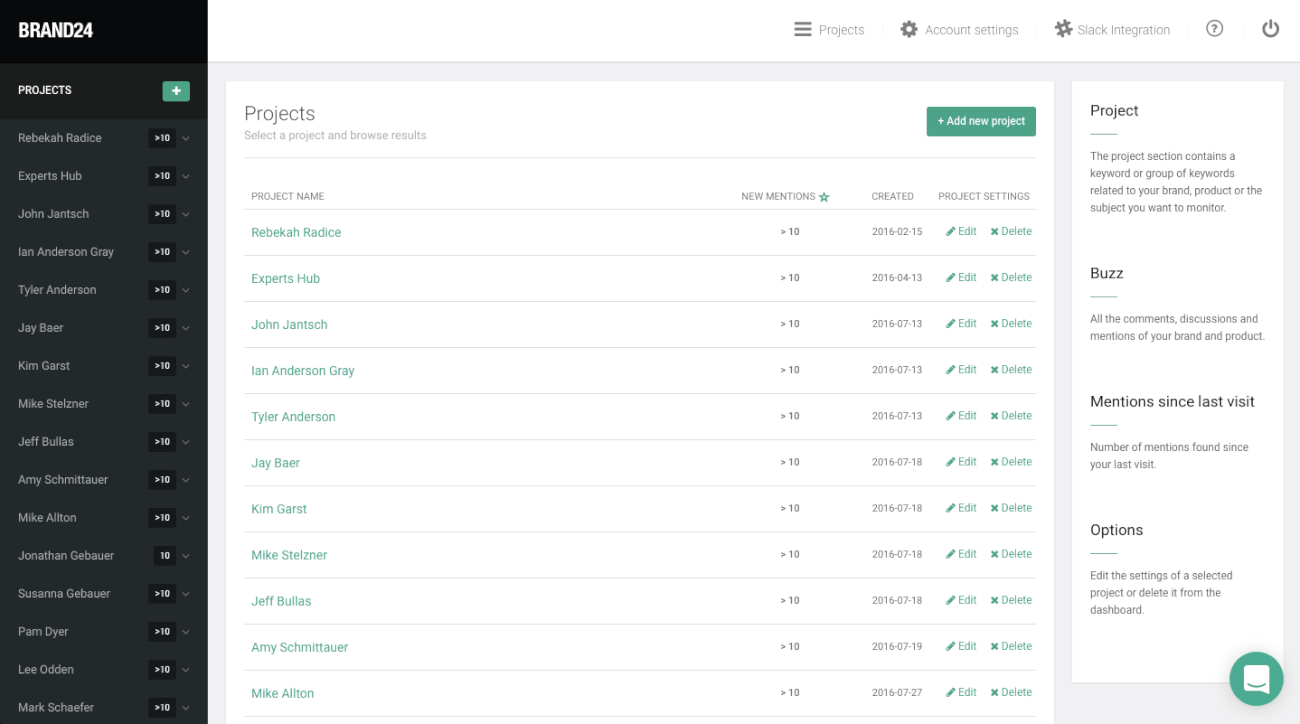
As the keywords for projects, we used influencers’ names and Twitter handles.
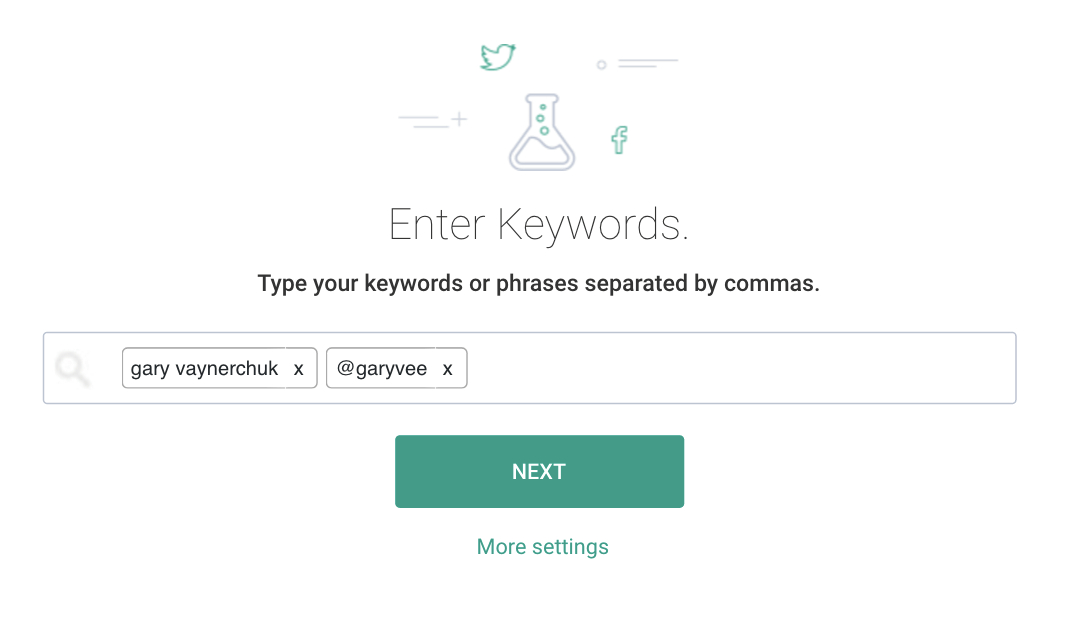
We were monitoring and analyzing the data over the period of 3 months from November until February. This span of time gave us 2 million mentions and 4 million interactions generated by influencers altogether. We identified 100 marketing influencers who drive the biggest engagement online.
By “engagement” we understand the total number of online mentions, the number of interactions and social media reach.

I’ll break it down for you:
- The number of mentions: it’s the total number of online content mentioning an influencer’s name. Mentions are collected from all publically available content on the Internet, including social media, websites, blogs, discussion forums, videos and images.
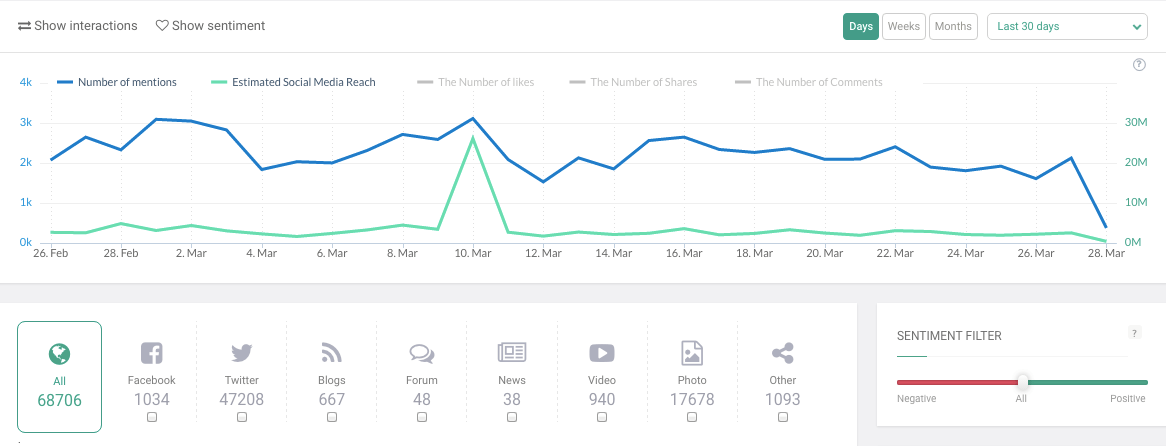
- The number of interactions: it’s the number of reactions to mentions related to an influencer. In the case of social media, these are likes and shares. Here’s a the number of interactions for a single mention.
- Social media reach: it’s the combined number of people who came across the social media mentions including influencers’ names.
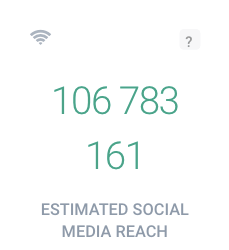
What’s Next
Having all the necessary bits of data we could begin the arduous process of putting all the pieces of the puzzle together. This included:
- Gathering and systematizing acquired data in one place. In other words, we moved to Google Sheets to fill innumerable rows, columns and tables with different pieces of data
- Collecting influencers’ bios
- Cooperating with the graphic designer
- Planning the schedule of the release via different channels
Feedback
After the release, in most cases, we’ve been overwhelmed with positive feedback. However, it wasn’t without some skeptical comments about the very nature of influence and legitimacy of some influencers.
That’s something I mentioned in the beginning. Is it really possible to measure the actual influence? After all, there are some “influencers” out there who buy likes and followers.
It’s crucial to keep in mind that our report doesn’t raise the question of the actual influence; it enumerates marketing influencers according to social media engagement they drive; based on data.
Major Takeaways
Looking at it from time’s perspective, we know what could have been done differently or more efficiently. Here are some conclusions.
- Things tend to get lost in Slack. Duh.
- Separating data about XYZ the influencer and XYZ V the hockey player takes time.
- Sometimes, influencers buy followers.
- It’s good to use a project management tool while working on such a report.
- It’s good to make yourself available for the next 72 hours after the release of the report. Lots of messages incoming!
- Influence is difficult to measure.
- … and much, much more.
Creating such a brand report is an eye-opening experience in many fields, trust me. It’s a valuable lesson in terms of establishing a workflow, communication within the team, cooperation between people and embracing the feedback.
Having this knowledge in mind, we can approach the next report with a different approach and a more effective work methodology.
Conclusion
If you’d like to take social listening for a spin, here you can start a Brand24 trial. It’s completely free.
And here you can get your free copy of the report!
Do you have your war stories, experiences or questions about creating data-driven reports? Feel free to share them in the comments section down below.
Top Reads
Brand Monitoring: Tools & Guide for 2026
Brand Awareness Strategy [The Ultimate Guide for 2026]
The Best AI Hashtag Tracker and Other Hashtag Tracking Tools [2026]
Social Media Reach: How to Measure & Improve It in 2026?
X (Twitter) Analytics Tools: The 10 Best to Try in 2026
Sentiment Analysis: What is it & Why do You Need it in 2026?
Share of Voice: Definition, Calculation, Tools [2026 Guide]
Brand Reputation Management: 6 Expert Tips for 2026
A Complete Guide to AI Social Media Analysis [2025]
How to See How Many Times a Hashtag Was Used on X (Twitter)
Start Social Listening!
Get the Brand24 trial and start social listening like a PRO.
